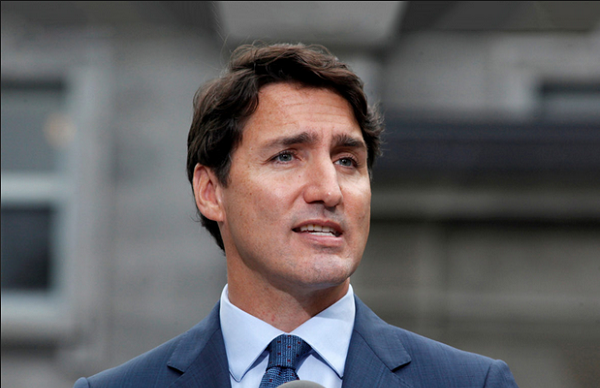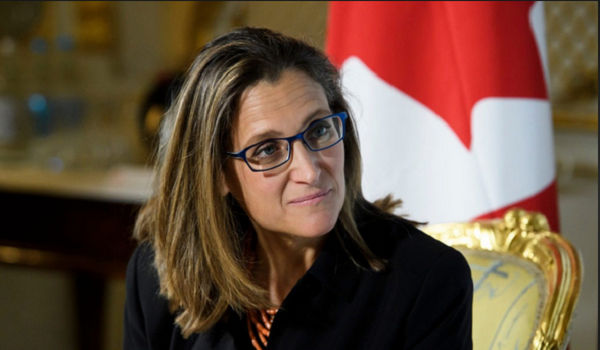Tips to guide Canadian businesses prepare for net zero
With this year marking the hottest temperatures the planet has recorded, and an early Canadian wildfire season that burned the most area ever, evidence of the climate crisis continues to be clear and near.
As a signatory to the 2015 Paris Agreement, Canada is committed to reducing greenhouse gas emissions (GHGs) and reaching net zero by 2050. While many efforts focus on high-emitting industries and large companies, it’s essential for every company, regardless of its size or industry, to contribute to reaching net-zero emissions.
To help prepare them, the Ivey Business School at Western University released a report called Corporate Strategies for Net Zero. It explores the steps companies can take to reduce their carbon footprint, while also improving their competitive positioning in a future net-zero economy.
While meeting the net-zero goals will be challenging, it’s possible with bold action, says Robert Klassen, co-author of the report and associate dean, Research.
“I have to remain optimistic. While the net-zero transition is going to be difficult, it is both an imperative and an opportunity,” he says.
The UN reports that to avoid the worst impacts of climate change and “preserve a livable planet”, we need to limit the rise in global temperature to 1.5°C above pre-industrial levels. The Earth is 1.1°C warmer than in the late 1800s, and GHGs keep increasing. Staying under the 1.5°C increase, as the Paris Agreement calls for, means cutting emissions by 45 per cent by 2030 and reaching net zero by 2050.
The Ivey report examines three broad scopes where organizations must reduce their GHG emissions when creating a transition plan.
Scope 1 is a company’s direct emissions, and Scope 2 is the emissions associated with energy used by the company. Those are directly under a company’s control, so “First, get your own house in order,” advises Prof. Klassen.
Scope 3 involves a company’s indirect emissions across their value chain, so is much more challenging. That includes emissions generated by the goods and services the company purchases, and the distribution and use of its products.
“Working with suppliers and other partners, and developing innovative solutions are critical,” says Prof. Klassen.
Every company must pursue their own net-zero journey. But to assess their readiness, the Ivey report encourages senior management to answer four critical questions:
- What’s your rationale for reducing GHG emissions and, if truly ambitious, committing to net zero?
- What decision-making processes will translate your commitments into action to make progress?
- How do you foresee external organizational relationships changing based on your or their strategy for net zero?
- How might an innovation mindset guide your firm’s decision-making and become embedded in your net-zero plan?
When organizations take action, they share their progress toward net-zero with the public, employees, investors and others. Wren Montgomery, a sustainability professor at Ivey Business School, warns against greenwashing.
That involves making misleading claims or selective disclosures, or being inconsistent by “saying you’re committed to net zero while still actively supporting fossil fuels,” explains Prof. Montgomery.
She says consumers have become savvier about claims of so-called “sustainable” or “green” products. But promises about what a company will be doing in 2050 are harder to track.
“It’s much easier to lie about what you’re doing in the future, and more challenging for activists and journalists to scrutinize,” Prof. Montgomery says. “If somebody says they’ll reach net zero by 2050 without interim goals to me that’s greenwashing.”
As many activists and non-governmental organizations have pointed out, we couldn’t actually fit all the trees on the planet that companies are promising to plant.
A process for independent verification of net-zero claims would help. The Science Based Targets initiative (SBTi) reviews and defines best practices.
Still, companies lack a third-party certification body with no industry affiliations, similar to one that deems products to be organic.To help companies assess their net-zero plans, Toronto-based Manifest Climate uses artificial intelligence to compile information from to emulate.
While many companies have transition plans, robust details about how to take action are less common, says Laura Zizzo, co-founder and CEO of Manifest Climate.
“About half the companies in our database have a transition plan published. Twelve per cent of those discuss its impact on resource allocation and business strategy. Only five per cent detail the specific metrics and targets they’re using to manage these risks,” says Ms. Zizzo, one of the expert reviewers on Ivey’s Corporate Strategies for Net Zero report.
Among the companies that stand out to her are Vancouver City Savings Credit Union (Vancity), a banking co-op based in Vancouver, which has set out how its board will oversee the net-zero strategy. This kind of accountability lends more credibility to future planning, Ms. Zizzo says.
Prof. Klassen suggests that some companies might shy away from net-zero planning because they think their plans must be all or nothing. But getting at least part of the way to net zero is a starting point and can make an important contribution.
It’s also crucial to have detailed and credible plans, particularly for younger stakeholders.
“The younger generation is aware of hypocrisy,” says Prof. Montgomery. “The planet is burning up, and they’re concerned about the future. It’s a risky strategy trying to fool them. You’re going to lose.”
Advertising feature produced by Globe Content Studio with Ivey School of Business. The Globe’s editorial department was not involved.
This article was reported by The Globe and Mail
















